With ever growing expectations from today’s consumer of hyper-personalisation, airlines are looking beyond conventional customer experience to attract and retain customers. To remain competitive, airline focus has shifted beyond just selling seats, accruing loyalty points or offering more appealing meals on-board.
XR technology including Augmented Reality (AR), Virtual Reality (VR) and Mixed Reality (MR) is offering a competitive edge. At the same time allowing airlines to reduce operating costs. All of these immersive technologies work wonders in their own way. They can be tailored to different applications, from training, in-flight entertainment, crew services to marketing campaigns.
Large airlines who now favour agility and vision have been following the XR trends. Many are starting to embrace XR technologies in the various areas of their business. Below we highlight the key players.
Cabin Crew training
Airlines such as American Airlines, Neos Air and Philippine Airlines have now incorporated VR technology in to their cabin crew training programs. They cover topics such as cabin familiarisation, emergency training and suspicious item simulation.

VR-enhanced interactive training increases the trainee’s engagement and knowledge retention. It significantly reduces the training costs involved compared to traditional training methods. Training programs are run on multiple devices such as smartphones, tablets, and VR headsets. It reduces the need for physical trainers and dedicated aircraft – which saves on aircraft downtime. Trainees can undergo training anywhere and anytime. They no longer have to travel to designated training facilities and stay for days while incurring other logistics costs.
Other than cost-savings, VR made the training safer for the trainees and the training aircraft. It can realistically simulate various hazardous scenarios which are otherwise impossible due to the danger, time and expense. Scenarios such as fire evacuation, a cabin depressurizing and the cabin door inflation slide. With VR technology, the possibilities are safe and limitless.
Maintenance training
Airbus has been at the forefront of virtual and augmented reality technologies in the industry. They have implemented VR tools throughout the aircraft design process, on the digital shop floor and for inspection purposes. New technologies have enabled Airbus operations with improved costs, time and accessibility.

Nearer to home, Jetstar Australia has deployed Virtual Reality maintenance training – the first airline in Australia to do so. So far Jetstar has implemented this technology in its Boeing 787 and Airbus A320 training. Jetstar stating that a training scenario is now shortened to 30 minutes compared to the 3.5 hours of conventional training.
Hand Baggage Check
Dutch national airline KLM provides its customers with an Augmented Reality (AR) App to check from the comfort of homw whether their carry-on baggage is of the permitted size to travel. Viewing through a smartphone camera, customers can place a virtual KLM suitcase next to their real suitcase which shows if theirs meets the size requirement.

The KLM Augmented Reality app has millions of downloads, and has more than 100,000 active daily users!
No less than 70% of app users are logged in permanently and are using the KLM app several times a month.
In-Flight Service
Lufthansa had demonstrated the use of augmented reality (AR) device when cabin crew are offering in-flight service. When wearing smart glasses, crew can view key information of a certain passenger in real-time through the device. The device displays information such as frequent flyer number, meal preferences, travel destination and more. It is able to detect customer’s emotion so the crew can engage customers in a proactive and effective way. Air New Zealand also researched the idea utlising a Microsoft Hololens.

Marketing Campaign
During this year’s TRENZ conference in Rotorua, Air New Zealand had showcased its new Mixed Reality experience – Fact or Fantasy Game of New Zealand. Developed with US-based Mixed Reality technology pioneer Magic Leap and UK based special effects studio Framestore, to gauge potential clients. The experience headlined Magic Leap’s developer conference, garnering global attention.
Accordingly to the airline’s GM Global Brand & Content Marketing, Jodi Williams, it is largely an exercise in feeling-out the AR technology space. However, it demonstrates the airlines’ intention to explore the technology.

In-Flight Entertainment
Back in 2015, Qantas launched a 3-month trial entertainment service. It uses Samsung VR gear to offer customers 360º video of network destinations and new Qantas products.
Alaska Airlines tested a cinematic VR headset for first-class customers last year aboard its Seattle-Boston and Boston-San Diego routes. Guest can switch between 2D and 3D mode as they wish to view selected blockbusters provided by SkyLights’ partners – 20th Century Fox, Warner Brothers and EIM. Without any surprise, Spielberg’s “Ready Player One” is on the play list.

Lufthansa and Air France have started adopting VR for business purposes as well.
Summary
No doubt, multiple factors will re-shape the airline industry in the future. One thing is for sure, whoever adopts the emerging technologies the fastest and develops them well will gain a measureable advantage. Airlines know they need to re-think their service offering. They need to embrace immersive customer experiences that engage customers’ imagination and build on brand loyalty. Cost saving benefits are also up for grabs for whoever can adopt XR technology effectively in to their day-to-day operations.
The world as we experience it today is changing faster than ever. Large corporations know change is necessary but not all developed the agility to respond to such a rapidly changing market. Our advice? Get on board the XR revolution and get comfortable sitting up front.

With a Masters Degree in International Management from Waikato University, Yan Fu manages all day to day operations. As well as studio management, Yan brings her own unique design and developer experience.

